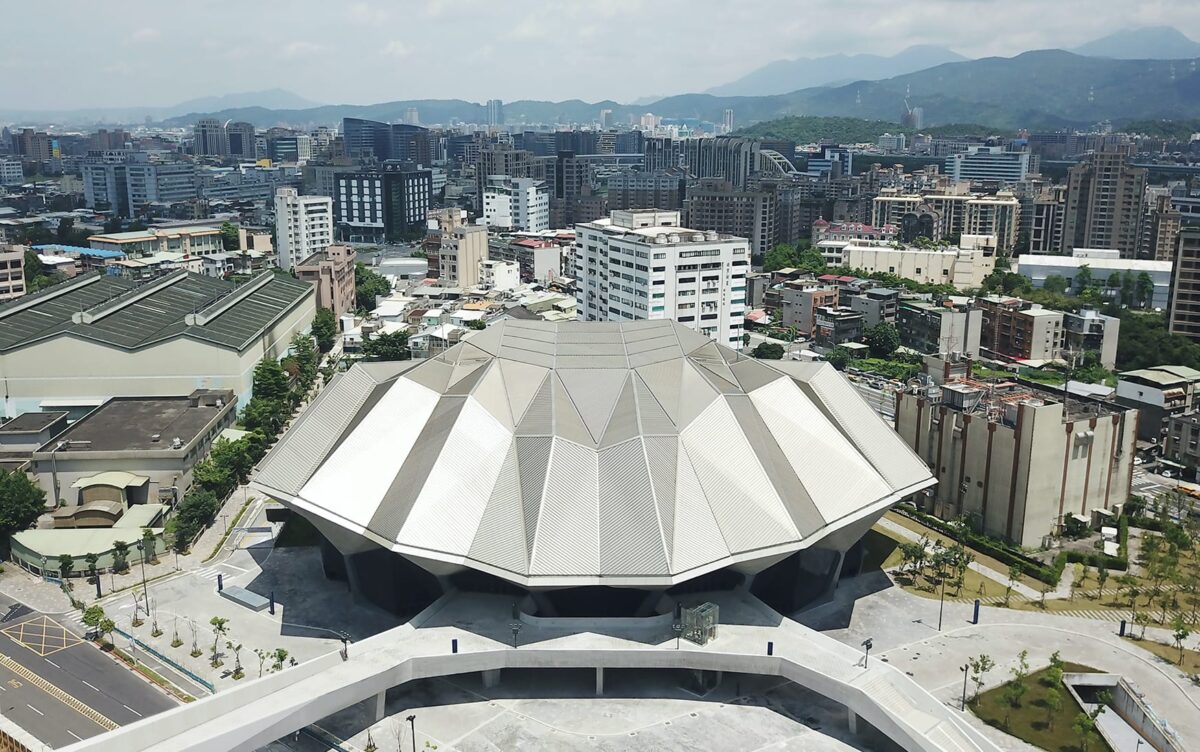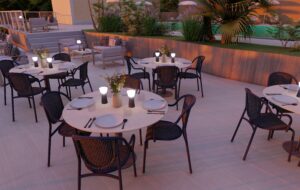The bold, geometric building is a celebration of pop music through architecture

Designed by New York-based practice RUR Architecture, the 70,235 sq m Performance Hall at the Taipei Music Center (TMC) – which officially opened with its first concert on 5 September – is set in Taipei’s busy Nangang District, where the firm’s competition-winning design for a 9-hectare site is dedicated to the performance, production and celebration of pop music in Asia.
The architects’ design was inspired by the city’s surroundings; aluminium-clad and geometric in form, the building’s expansive volumes mirror the terrain of the nearby mountains. Seating 6000 inside and accommodating several hundred outside in the public plaza, the performance hall is designed for indoor and outdoor performances alike.

One of three major buildings in RUR’s masterplan, the Performance Hall along with the Exhibition Hall – the latter also known as ‘The Cube’ – is home to several exhibition spaces, as well as research, archives and lecture facilities. Meanwhile, the Creative Area Building houses production amenities. A pair of elevated public ground bridges are divided by Civic Boulevard, which unites all three buildings and live houses, where visitors will have the chance to watch Taipei’s emerging talent perform in smaller, more intimate concerts.
Careful consideration to acoustics, lighting, eco-friendly heating and cooling systems ensures a high-quality experience for both performers and visitors. Outside, fully landscaped grounds and the inclusion of public functions such as shops, markets and cafes, position the TMC as a destination-venue for Taipei residents and visitors alike. The south side of the complex is scheduled to open in mid-2021, which will mark the completion of the project over a decade in planning by the central government and a decade in design and construction of RUR’s winning scheme.

Jesse Reiser, principal at RUR, comments: ‘Ten years ago, the outskirts of Taipei were characterised by industrial areas situated right up against verdant, forested hills. There was, and still is, no gradual transition of city to suburbs – in fact no suburbs at all. The effect of that contrast is a striking juxtaposition between city and nature.
‘Once the old industry was removed and the Taipei Music Center was constructed, we found that nature and new architecture amplified each other’s beauty. Taipei Music Center functions as a discrete urban organism within the natural landscape, an urban peninsula connected to the city yet independent and extending beyond it into nature.’

Ko Wen-je, the Mayor of Taipei City, adds: ‘Our priority was to create a landmark building for the people of Taipei that at the same time provides necessary support to the pop music industry. The unique mountain-like eye catching geometry designed by RUR Architecture from New York allows us to reemphasise the Taiwanese pop music industry as playing a leading role in Mandarin and Asian pop music.’
Fusing state-of-the-art technology and contemporary design with a sensitive approach towards Taipei’s surrounding landscape, the Taipei Music Center Performance Hall is a form of beauty in harmony with both the natural world and music.
All images courtesy of RUR Architecture & Fei and Cheng Associates and Yana Zhezhela & Elek Vatagin



















